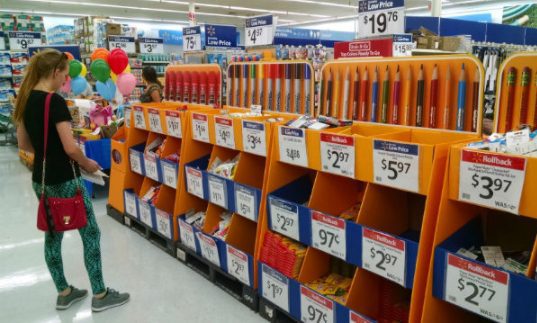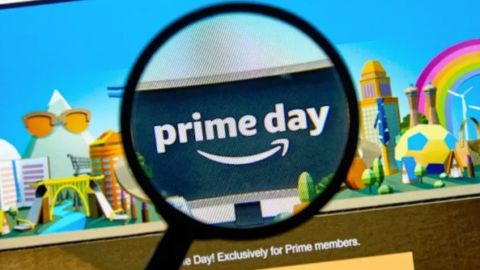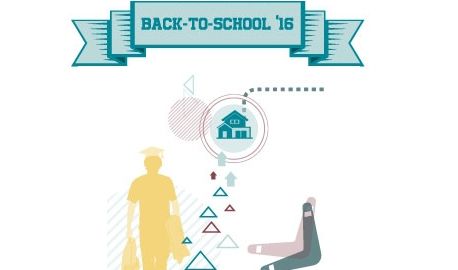Back-to-school (BTS) spending in 2017 is expected to reach anywhere from $27 billion to $29.5 billion, according to surveys from Deloitte and the National Retail Federation (NRF). But perhaps the most significant projection focuses on where BTS shoppers will be spending their money.
BTS consumers will focus much of their shopping at mass merchants (81%),a 24% jump from 2016, according to Deloitte.
Additional key spending trends throughout the 2017 BTS season include:
-
Department stores, which held the No. 2 spot last year (54% of shoppers), will fall to No. 6 (28%);
-
Off-price stores will gain their fair share of new shoppers, climbing from 10% last year to 28% in 2017;
-
Office supply retailers and technology stores also are on the downslide, declining from 41% in 2016 to 33%; and
-
Online-only retailers will attract 36% of shoppers.
“If you look at the big mass merchants, they have all gotten much better at integrating digital and in-store, whether it’s buy online/pickup in-store, or the way they present the in-store assortment online, or building relationships via social media and email,” said Jeff Simpson, Managing Director in Deloitte Consulting LLP’s Retail practice, in an interview with Retail TouchPoints. “Mass merchants have done a better job than their department store counterparts over the last couple years and it’s beginning to show up here in the way customers are spending. There are very few surveys or events you see during the year where you see that disparity between mass merchants and online-only retailers.”
For example, this year Walmart has substantially increased the number of back-to-school and back-to-college items customers can order using the Online Grocery Pickup and Pickup Today services. Walmart also has introduced “Back-to-School Helpers,” who are store associates trained to help customers find shorter checkout lines and find items on their shopping list.
As Brand Affinity Rises, Department Stores Fall Out Of Favor
As more consumers shift from a retailer-focused to a brand-focused buying philosophy, department stores continue to attract fewer shoppers, leaving the door open for mass merchants that offer technology, apparel and school supplies, according to Andrew Billings, a principal consultant and senior leader in the global retail group practice at consulting firm North Highland.
“Back-to-school is just a primary example of how parents may still have an affinity for the department store itself, but in this day in age, all those brands are going directly to the consumers,” Billings said in an interview with Retail TouchPoints. “On Facebook, you’re getting push messages for the actual brands themselves, not as much just the department store. All department stores are feeling the impact, especially for back-to-school, where the younger generation is more interested in the actual brand and product as opposed to the store that actually sold it to them.”
Young Shoppers Gain Influence On BTS Spending, Push Retailers To Adapt
Kids’ influence on their BTS purchases is growing: as many as 65% of back-to-school shoppers say half or more of their purchases are a direct result of their children’s influence, up from 57% last year, according to NRF. This gives retailers a great opportunity to learn more about the shopping preferences of their youngest consumer base, which typically dictates where, when and how overall shopping trends and habits evolve.
“One of the powerful elements of back-to-school events is they serve as fabulous customer acquisition drivers when done properly,” Simpson said. “They help you identify a different need of a customer who may be a passive customer. Take a mass merchant, for example. A mass merchant is trying to grow its apparel business, and a BTS event brings it a bunch of new customers at a given time of the year. If you’re smart and you pay attention to who those customers are, you can begin to integrate them into your marketing messaging going forward around categories like apparel.”
BTS Shopper Trends Set The Tone For Holiday Sales
Understanding the shopper preferences — of both existing and new customers — can help retailers plan ahead for other major events throughout the year. Billings said retailers should continue analyzing these BTS shopping trends to serve as a dry run for the upcoming holiday season.
“BTS is a unique period of time where there’s a certain segment of consumer that is going to have a high propensity to spend — especially if we’re talking about retailers focused on the younger generation,” Billings said. “From a store perspective, they’re going to have staff increases much like the holiday season so there are quite a few things retailers can learn. It’s the channels they’re engaging on, the types of products that are getting the most views and most conversions, and even store traffic patterns. There’s a number of different data points that we can take into account that absolutely should be fed into different engines of the company…knowing that they typically have three to four months to get something meaningful in place to prepare for the holiday season.”













